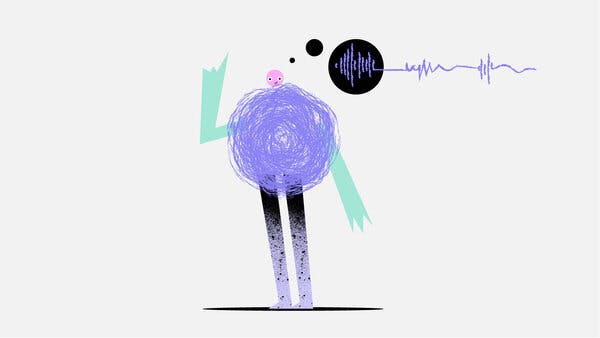The visual arts have always been a mirror of human culture, reflecting our beliefs, values, and ways of understanding the world. Two key approaches help us interpret this visual language: iconography and iconology. While the terms sound similar, the difference between iconography and iconology lies in how each method examines art. They are distinct, yet they work best together to reveal the full meaning of a work.
The relationship between these approaches is like reading a text versus interpreting its cultural significance. Just as a linguist might first look at the structure of a sentence before exploring its meaning in context, art historians use both methods to move from describing what they see to understanding the deeper layers of symbolism and cultural meaning.
What is Iconography?
Iconography, from the Greek words eikon (image) and graphia (writing), is the study and classification of visual imagery. This is often the first step in analyzing a piece of art. It involves identifying recurring motifs, recording symbolic details, and noting the themes an artwork represents.
An iconographic approach might focus on what appears in the image: figures, objects, gestures, or patterns that appear across different works or time periods. This process is systematic, allowing scholars to build a visual database that shows how symbols have evolved over time. Without this step, it’s much harder to trace the roots and meanings of recurring elements in art history.
What is Iconology?
Iconology builds on the work of iconography by placing symbols within their broader cultural, historical, and philosophical contexts. Instead of simply asking “what is shown?” it asks “why is it shown this way, and what does it reveal about the society that produced it?”
For example, in Leonardo da Vinci’s The Last Supper, an iconographic analysis might note the chalice, bread, and arrangement of figures. Iconology would then explore their cultural and religious importance during the Renaissance, revealing how they connect to theological debates, patronage, and social values of the time.

Artwork generated from prompt workflow by Dre Labre
Historical Development of Art Analysis
The foundations of modern iconography and iconology date back to the Renaissance, when artists and scholars first began cataloging symbols systematically. In the 19th century, formal art history methods took shape. The early 20th century saw Aby Warburg’s pioneering studies in cultural memory and symbolic migration, while Erwin Panofsky developed a three-step framework for moving from description to deep cultural interpretation.
Warburg’s Contribution
Aby Warburg’s work was revolutionary because it linked symbols across time and cultures. He studied how visual motifs traveled between societies, how cultural memory preserved meaning, and how psychological factors influenced artistic choices. Warburg showed that symbols are not static; they shift as they pass through different historical and cultural environments.
Panofsky’s Three Levels of Interpretation
Panofsky’s method is still a cornerstone in art history:
- Pre-iconographical Description – Identifying basic forms and subject matter.
- Iconographical Analysis – Recognizing established meanings, stories, and allegories.
- Iconological Interpretation – Placing the work in its wider cultural, historical, and philosophical context.
This progression mirrors the difference between iconography and iconology, moving from observation to interpretation.
Modern Applications
Today, these methods are applied not only to paintings and sculpture but also to digital art and new media, social media imagery, user interface design, and immersive virtual environments. Online museum collections, image-recognition software, and academic archives have expanded the range and depth of analysis. Scholars can now study patterns at a global scale, compare artworks instantly, and access cultural material that was once locked in physical archives.
Contemporary Challenges
While technology has made research easier, it has also introduced challenges. Digital art formats can be difficult to preserve. Interactive and VR-based artworks require new strategies for interpretation. Globalization has also created complex cross-cultural exchanges of symbols, making it harder to pin down singular meanings.
Why Both Methods Matter
The difference between iconography and iconology is not about choosing one over the other — they are most powerful when used together. Iconography gives us the “what,” creating a record of visual elements. Iconology adds the “why,” placing these symbols into the web of historical, cultural, and philosophical meaning. Together, they allow art historians to bridge the gap between form and meaning, between the visual surface and the cultural depth it conceals.

Artwork generated from prompt workflow by Dre Labre
Frequently Asked Questions
Can iconography and iconology be applied outside of art history?
Yes. These methods can be used in film studies, advertising analysis, video game design, and other fields where images carry cultural meaning.
What skills do you need to study iconography and iconology?
A strong visual memory, attention to detail, and knowledge of cultural history are essential. Familiarity with art history resources and research tools also helps.
How does digital technology affect the study of visual symbols?
It allows faster, broader comparisons across collections, but it also presents challenges in preserving and interpreting digital and interactive works.
Why is cultural context important in iconology?
Without cultural context, symbols risk being misunderstood or oversimplified. Context reveals the values, beliefs, and historical events that shape how symbols are created and used.
Conclusion
The difference between iconography and iconology is more than a matter of terminology — it’s the bridge between describing an artwork and uncovering its deeper cultural meaning. Iconography gives us the tools to identify and record visual elements, while iconology places those symbols in the wider context of history, philosophy, and society.
Together, these methods create a fuller understanding of visual culture, from classical paintings to digital art and new media. As art continues to evolve, so too will these analytical approaches, ensuring we can interpret not only what we see, but also the complex ideas and values that shape it.

